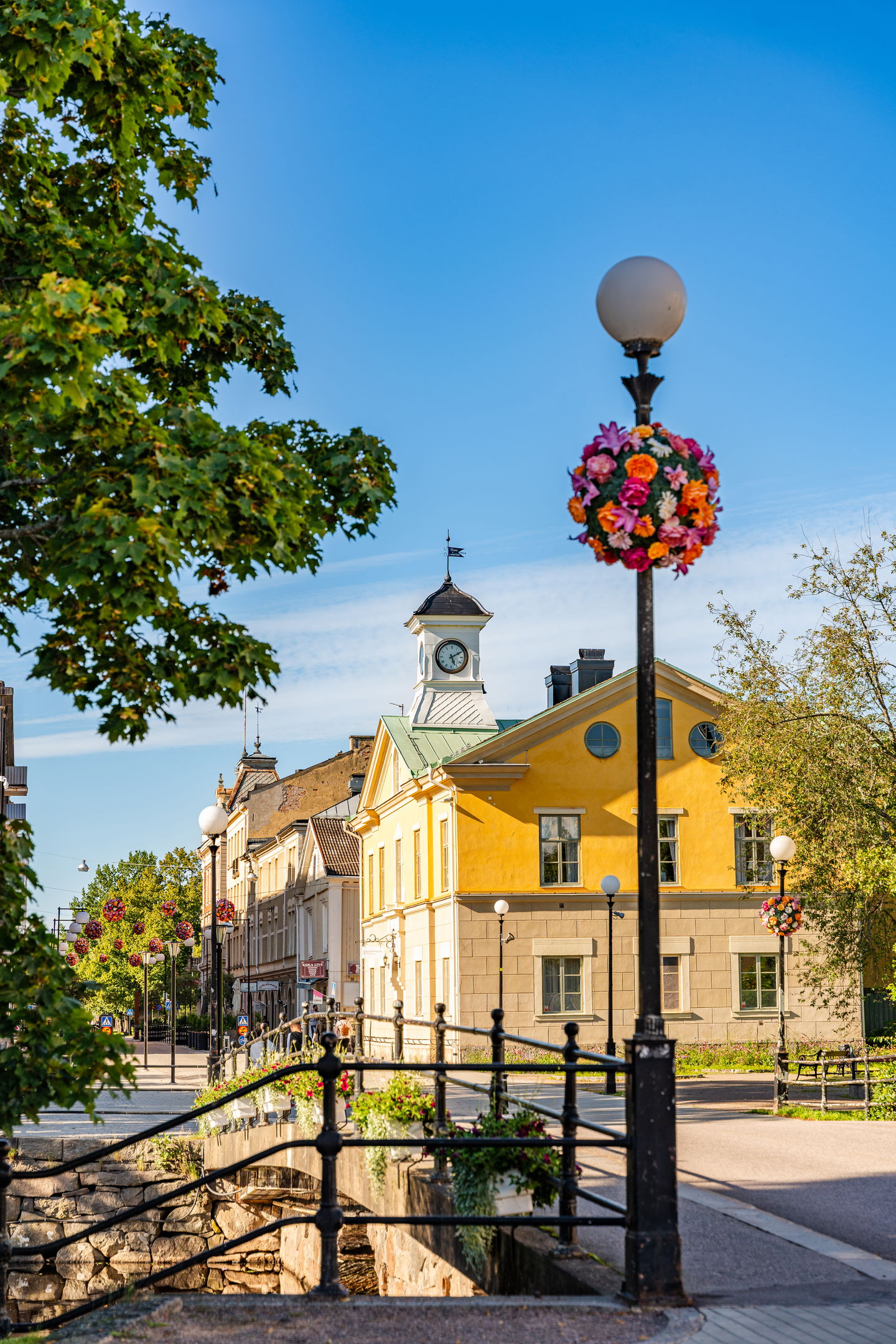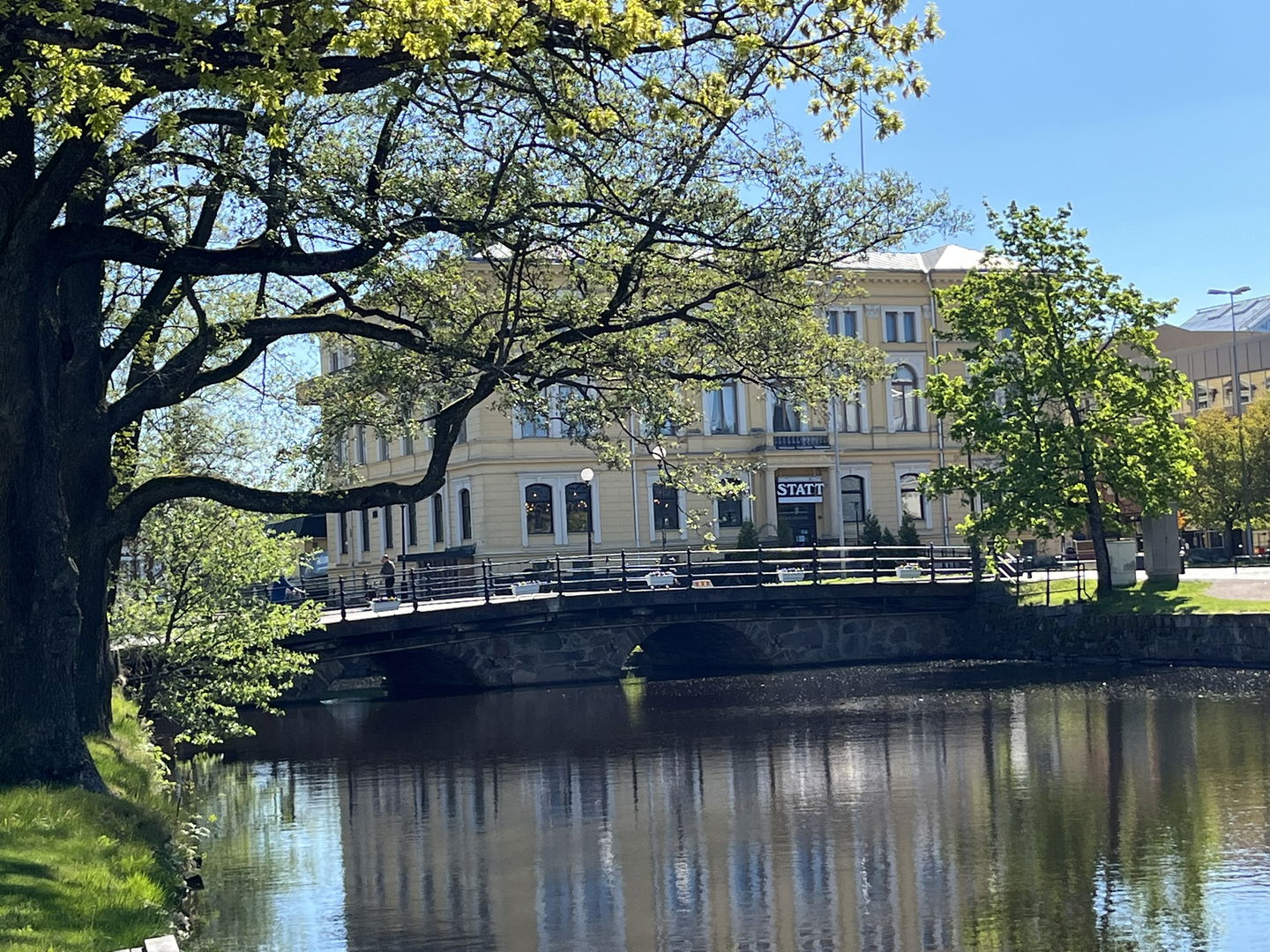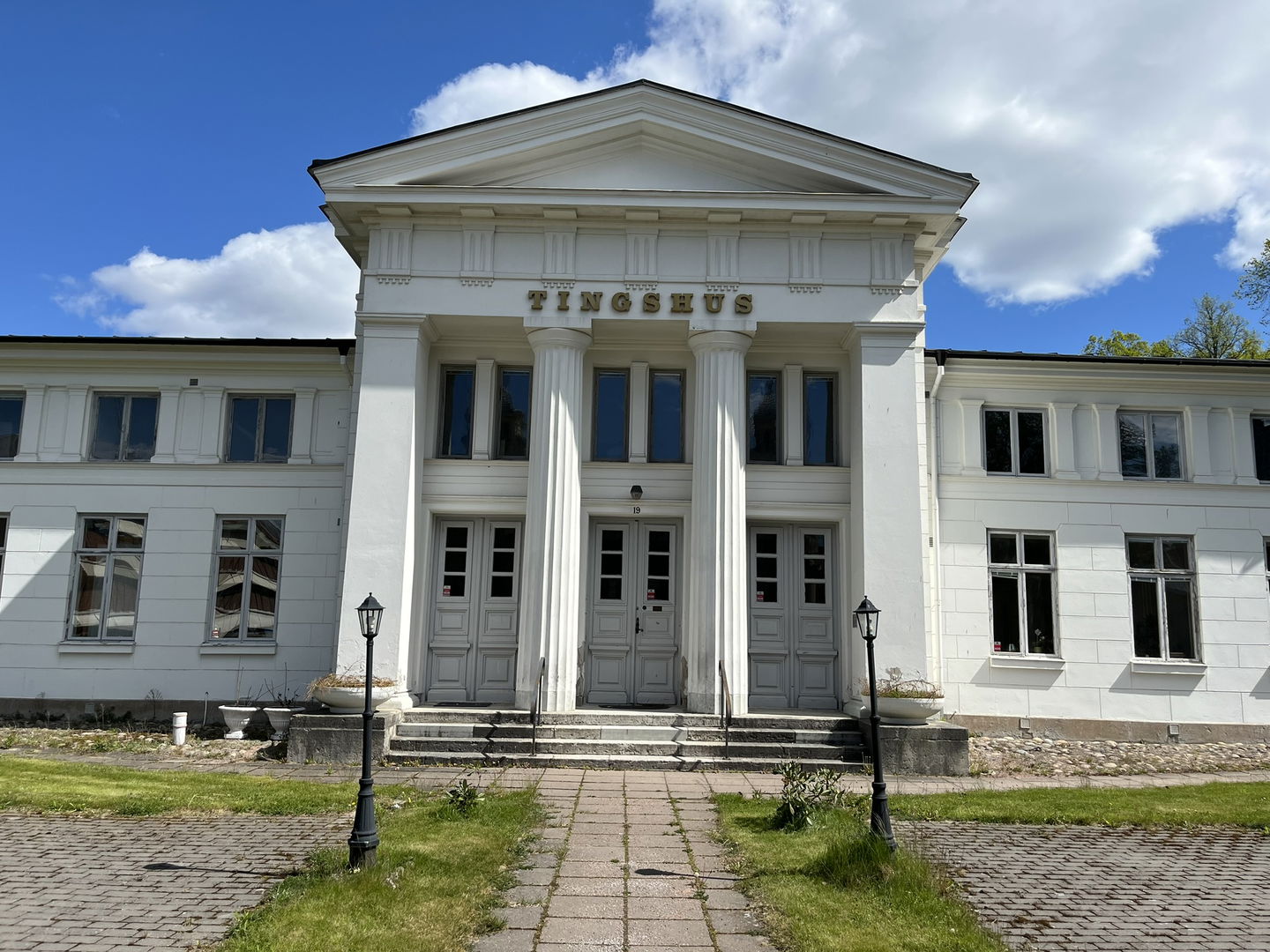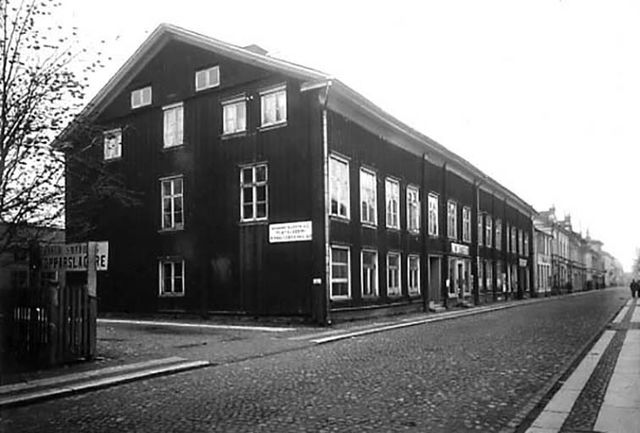
Arkitekturpromenad 1 i Kristinehamn
Kävely
- Kunta: Värmlands län
- 6708.43 km päässä sinusta
Polun yksityiskohdat
- Pituus 1.8 km
- Vaikeuksia Vihreä - yksinkertainen
Toiminnot
Kuvaus
Kristinehamn – where houses whisper stories
Welcome to a walk through Kristinehamn’s beautiful town center – where every building carries its own story. Here, grand temple-style houses, industrial history, the golden age of the railway, and romantic villas coexist. During this walk, we highlight some of the town’s most interesting architectural gems. But don’t forget to look up, around, and beyond – because hidden in façades, bridges, signs, and sculptures are details that together shape the soul of the town.
Keep an eye out for the small silver plaques – they offer short stories right on the spot. You can also find larger oval signs in a few central locations, providing even more context.
Ready to discover the town’s hidden beauty? Let’s go!
Resecentrum / Kristinehamn railway station – the gateway to the world

When Kristinehamn’s station was inaugurated in 1866, it was celebrated with fireworks, pomp, and a banquet at the Assembly House. The beautiful two-story building was then the center of a vibrant travel hub. Surrounding it were engine sheds, freight warehouses, and carriage houses – a little railway town within the town.
The station became the hub for both the Northwestern Main Line and the Inland Line. However, it wasn’t until 1993 that the building regained its original exterior, thanks to SJ’s careful restoration. Today, it’s hard not to be fascinated by how much of Sweden’s railway history begins right here, in Kristinehamn.
Norra verken (Dalavägen 23) – industrial history in brick and steel
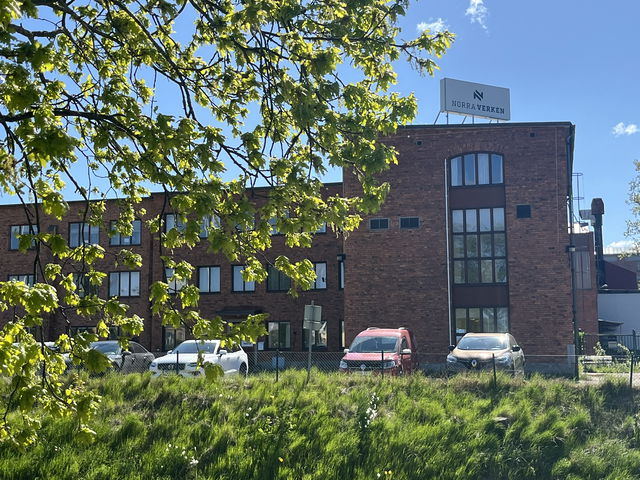
Along Dalavägen stand the red-brick buildings that once formed the heart of Sweden’s railway development. Christinehamns Railway Workshop was established here in 1849 – the same year the railway to Sjöändan opened. Locomotives and wagons were serviced, repaired, and manufactured here. In 1856, a larger workshop was built, part of which still remains.
Over time, this became Christinehamns Mechanical Workshop – a melting pot of technology and innovation. Ideas that changed the world were born here: Viktor Kaplan’s water turbine took its first shape here, and the 1930s saw the creation of the world-famous KaMeWa propeller.
It’s hard not to feel the presence of history when passing these buildings – as if the brick walls still whisper of innovation and industrial pride.
Fabriksgatan 9 – plastered gem among wooden facades
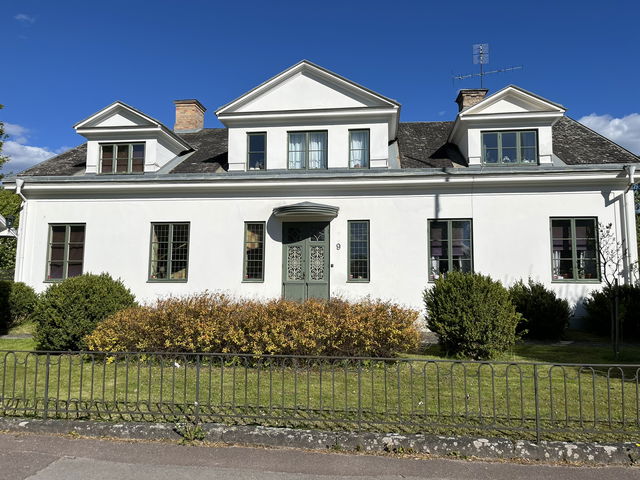
On a street dominated by wooden houses, this plastered villa stands as an elegant exception. Built in 1870, on what was then the edge of town, it was along these so-called “Fence Streets” that Kristinehamn first expanded beyond its old center.
The villa covers 300 square meters – not including the garage, basement, or annexes. Notice the beautifully cast patterns on the entrance doors – a detail you can spot in other places around town. Keep your eyes open – small beauties often appear where you least expect them.
Courthouse, Kungsgatan 19 – the house of law in temple style

Like a classical Greek temple in the middle of a small town, the bright courthouse from 1883 rises proudly. Designed by star architects Axel and Hjalmar Kumlien, who also worked on Marieberg Hospital and the Grand Hotel, it was built for the districts of Ölme, Visnum, and Väse.
At the back lies a semicircular apse where the old courtroom once was. On the wall, King Karl XV’s motto remains, painted in gold: “Land shall be built with law” – a reminder of the power of justice, signed by the town’s then master painter, August Lundgren.
Today the building is privately owned and used as offices, but its monumental form still speaks of justice, tradition – and ambitious architecture.
Town Hall, Kungsgatan 25 – the house of power with many roles
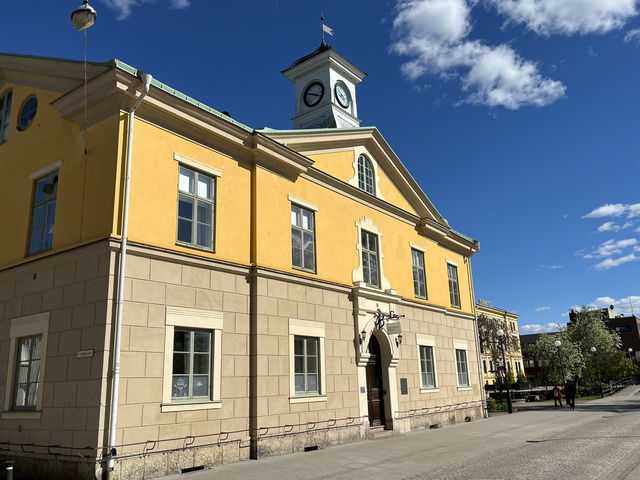
The present town hall was planned after the devastating fire of 1777. The designs were approved by King Gustav IV Adolf, and the building was completed in 1805 – but on a new site, at Norra torget.
Behind the elegant exterior lies a rich history: town hall, infirmary, mayor’s residence, telegraph station, and police station. The small house in the courtyard behind even served as a jail. Here, stories of power, everyday life, and hard times converge in one building.
Today, the building is used by the Bergslagen Artillery Regiment, which has moved in with both staff and history. Norra torget in front of the house was once a lively marketplace, a site for fish trade, and even a tennis court, set up by the Geijer family.
King’s Bridge – from wood to timeless stone
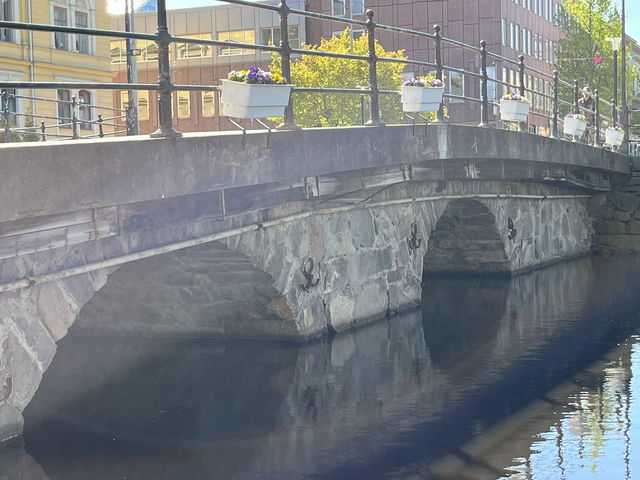
King’s Bridge is one of the town’s oldest, with origins dating back to the 1600s when it was built of wood. After the great fire of 1777, it was rebuilt in stone – and it is this bridge we still cross today.
Look closely at the stone arches and the simple anchor fastenings holding the structure together – these details tell of past craftsmanship. You’ll spot more anchor fastenings on buildings around town – their shapes varying with the era they were made.
Did you know Kristinehamn is one of the most bridge-dense municipalities in central Sweden? There are 48 bridges here – from the historic King’s Bridge to the modern Park Bridge.
Morabyrån, Kungsgatan 32 – a Parisian dream in the railway harbor

When Inland Line traffic director Jacques Wallner returned from the Paris World Exhibition of 1889, he was full of impressions. These took shape in Morabyrån, a building unlike any other in Kristinehamn – inspired by the Paris Opera House, with grandeur and pomp.
The building was erected in 1895, designed by architect Carl Österman. Here, neo-Renaissance staircases meet towers, lion heads, half-columns, and meander motifs – a true fairytale house in the heart of town.
For a long time, it housed the offices of the Mora–Vänern and Eastern Värmland railways – and today it is classified as one of Värmland’s most remarkable buildings.
The Wooden Castle, Tullportsgatan 11 – the inn’s new life
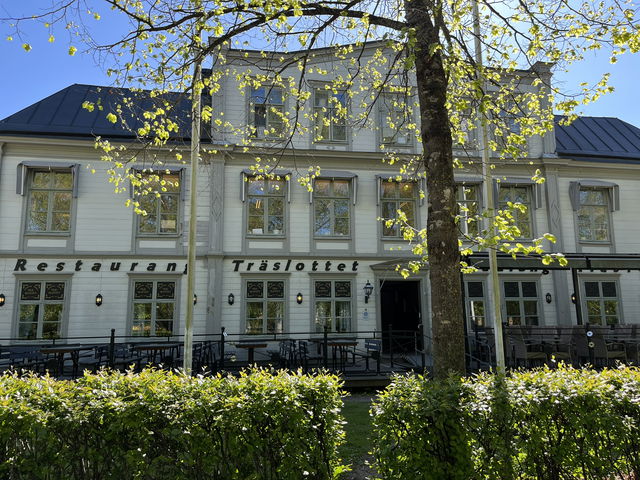
After the town fire of 1777, this large timber house was built, originally as an inn. It was then located at what is now Södra torget – but when the Grand Hotel was built, the Wooden Castle was moved to its current site.
Built in a U-shape, it carries typical features of its era. Pay special attention to the oval windows with small roofs above them – an architectural detail that recurs on several older buildings in Kristinehamn.
Today, the house contains a restaurant, offices, and apartments – but it still retains the feeling of being a place where people meet and pass through, just as in the past.
The walk now continues along Tullportsgatan back toward the Travel Center. But feel free to take a detour, sit down for a while, or step into one of the shops or cafés housed in the town’s historic buildings. You are not just following in footsteps – you are walking through living history.
Now you’re back at the Travel Center. We hope you’ve enjoyed a walk filled with historical and architectural impressions.
Toimintaa ja tilat
-
Kävely
-
Kulttuuripolku
Saavutettavuus
-
Lähellä julkista liikennettä
-
Lastenvaunujen kulku
Ota yhteyttä
Osoite
+46 (0)550 88187
Sähköpostiosoite
Kristinehamns turistbyrå
Organisaation logotyyppi

Huomaa, että osa näistä teksteistä on käännetty automaattisesti.
Kysymykset & vastaukset (Q&A)
Esitä kysymys muille Naturkartan-käyttäjille.




